Do You Know These Less-Heralded “Super Foods”?
If your idea of a healthy meal means chicken, broccoli, and brown rice, it’s time to expand your menu. Healthy eating should be fulfilling for your body and your taste buds. While this is not a comprehensive list, it contains some of the healthiest foods for your body. These foods are heart healthy, muscle repairing, anti-inflammatory, brain boosting, and detoxifying wonders. Discover which foods make satisfying meals with our list of healthiest foods on the planet.
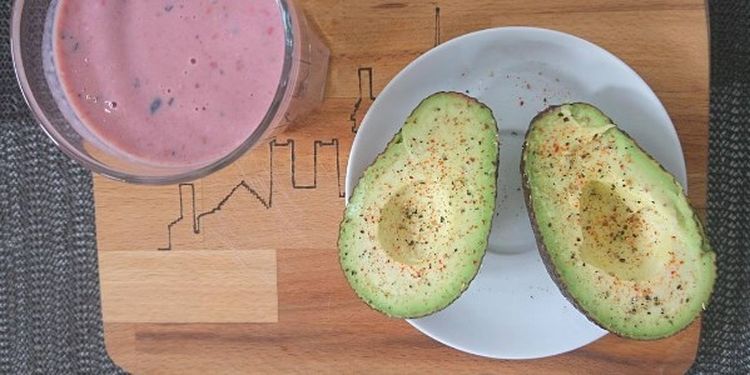
Avocado
If fats are friends, avocados are your besties. They provide plenty of healthy fats and stabilize your blood sugar with a high protein and low sugar content. They’re packed with vitamins B, C, and K, which prevent heart disease, improve brain function, and boost metabolism. Dip, slice, blend, and stir avocados into sauces, salads, smoothies, and baked goods for a creamy taste. Get creative!

Peanut Butter
One hearty scoop packs 7 grams of protein, which kickstarts your body’s metabolism and helps to prevent cardiovascular and coronary artery disease Double win! To reap the full health benefits of this legume, select unsalted, with no added sugars or hydrogenated oils. Most grocery stores have nut butter stations to grind your own! Tired of PB&Js? If you’re in the mood for Asian food, try an easy Thai peanut sauce recipe. A scoop of peanut butter, soy sauce, and noodles will pack plenty of flavor for the family.

Beets
Beets are the kid who’s picked last for kickball, but you’d be right to pick them first for their incredible nutrient profile. Aside from being a potent anti-inflammatory, beets’ antioxidants protect against cancer and blood toxins. Beets boost blood flow to combat brain fog and enhance mental performance. Heading to the gym? Beets improve energy and performance levels. But remember that beets are more than salad toppers. Roast them with vegetables, puree them with mashed potatoes, or toss them into your post-workout smoothie. Your muscles will thank you later.

Oats
Oats are chock full of plant-based proteins, healthy fatty acids, and fiber, which keeps you full and detoxes your gut and colon. Unprocessed oats have a low glycemic index, but highly processed (or “instant” oats) contain sugars and hydrogenated oils, so avoid them. Many folks have discovered the joy of overnight oats, so give that a try! Prepare a batch with coconut milk, raw honey, and cinnamon. Leave it overnight in the fridge and devour it in the morning.
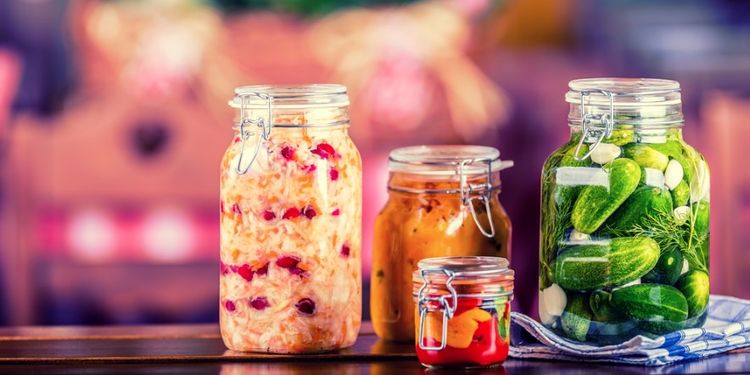
Pickles
More than a sandwich sidekick, pickles play a vital role in weight loss. At 15 calories a pickle, you can snack on several without guilt. Salt-water pickles, not vinegar, allow fermentation to create a natural probiotic food. Probiotics fortify your immune system, heal digestive problems, and combat mental health issues. Make crunchy pickles at home by adding salt, water, and seasonings such as dill or garlic— the waiting is the hard part! The same technique goes for other vegetables like carrots, peppers, and cabbage.

Tart Cherries
Pretty please with a tart cherry on top? Tart cherries prevent cardiovascular disease, diabetes and cancer and aid in weight loss. Their antioxidants help reduce belly fat and attack post-workout free radicals. Drinking tart cherry juice after a taxing workout reduces inflammation and begins the healing process in your muscles. You can eat them in a bowl or use them to top your oatmeal. Tart cherries add a pop of juicy flavor alongside a basket of health benefits.
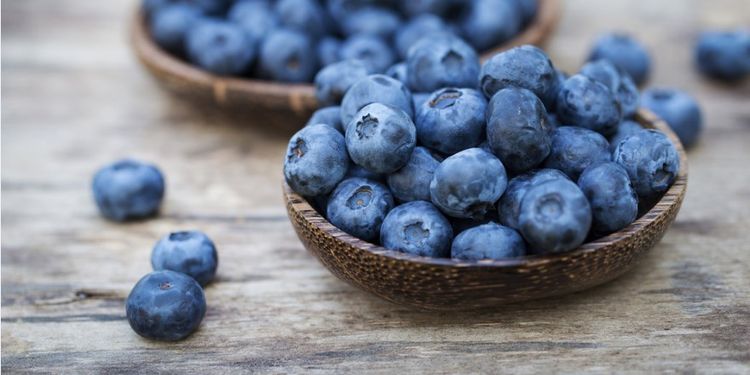
Blueberries
Roses are red. Blueberries are blue. Antioxidants make them an excellent brain food. Blueberries help reduce blood pressure, inflammation, and potential cancer cell growth because they are one of the most nutrient-dense foods, providing ample amounts of vitamin K, vitamin C, manganese, and fiber. Blueberries also help balance hormones to fight acne. Look for recipes that use whole ingredients and include raw blueberries. They’re great for oatmeal, pudding, or snacks, for example.

Green Tea
To most people, green tea sounds rejuvenating. An antioxidant-rich drink, green tea works to support cardiovascular and metabolic health by eliminating free radicals. It also blocks fatty buildup inside artery walls, which lowers cholesterol levels and blood pressure. Traces of caffeine in a steaming cup of green tea boost energy and mental focus with L-theanine, an amino acid, to reduce anxiety and provide energy without the coffee “jitters.” Enjoy a cup of green tea, lemon, and honey to fire up your morning.
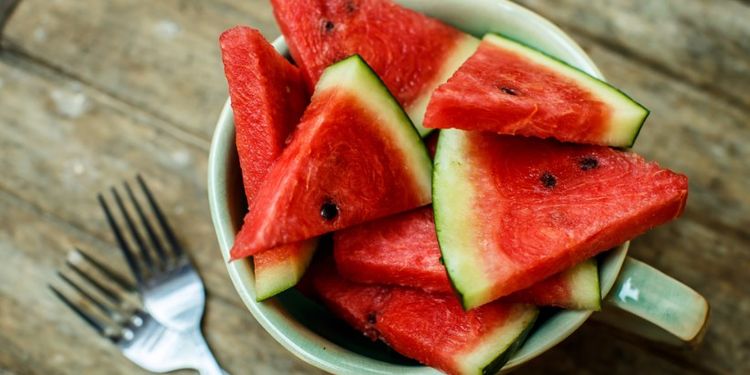
Watermelon
Watermelon is the fruit of the summer. Juicy, sweet, and crunchy, it’s high in antioxidants, and vitamin C, which will help to repair cell damage, detox the body, and relieve pain. Watermelon is also excellent for athletes who need to start muscle recovery, protect cartilage, and repair connective tissue. If you want more than simple cubed melon, add it to a salad. It turns out that feta or goat cheese, walnuts, spinach, and watermelon make a pretty refreshing summer meal.

Spinach
Popeye was onto something when he guzzled all that green stuff. One cup of spinach contains almost as much protein as a hard-boiled egg. Vitamins A, B, and C provide the benefits of antioxidants, which fight cancer and high cholesterol and improve kidney and liver function. Spinach is low-calorie, so scoop a couple more handfuls onto your plate without worry. Lightly steaming spinach helps your body digest more of its nutrients. Spinach’s versatile taste makes it easy to use in omelets, smoothies, or sauteed vegetable dishes.
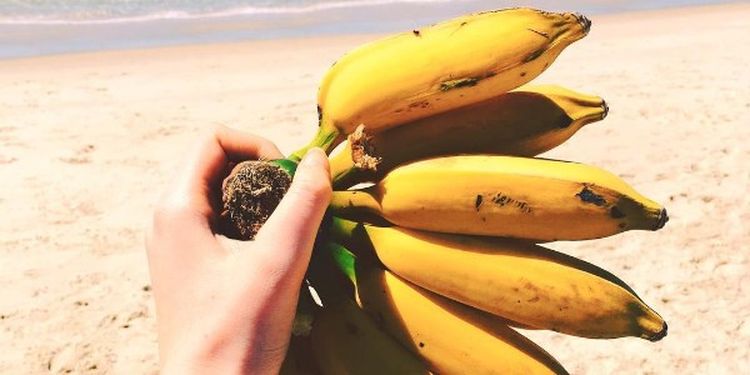
Banana
You might think of Curious George when you think of these yellow fruits, but bananas provide dozens of health advantages to humans too. The vitamin B9 in bananas wards off depression, and the potassium and good bacteria cut down on fluid retention and reduce bloating. Choline, a B vitamin, targets fat-storing cells around the abdomen. Bananas also keep you fuller longer with fewer cravings. Mash up ripe bananas to stuff your protein pancakes, or eat them with a scoop of nut butter. Your move.
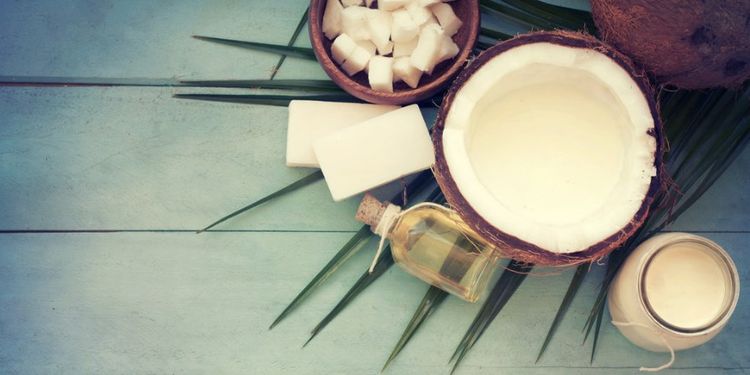
Coconut Oil
The Internet is bonkers for coconut oil, and for good reason— it’s laden with lauric acid. Antimicrobial lauric acid fights disease and viral infections while boosting your immune system. It also aids in clearing acne breakouts. As a medium-chain triglyceride (MCT), coconut oil is digested better than other fats and absorbs more nutrients. Just remember to buy unprocessed or cold-pressed coconut oils to reap the full benefits. It works as a great substitute for butter in baking, sautéing, and pan frying.

Cinnamon
No need for the cinnamon challenge. Cinnamon regulates blood sugar and prevents insulin spikes. Cinnamaldehyde, the active ingredient in cinnamon, stimulates insulin receptors, which allows excess sugar to move out of the bloodstream (and that’s how we want it). Cinnamon boosts antioxidants in the bloodstream, which stifles Alzheimer’s and improves cholesterol to boot. You’ll want to purchase Ceylon instead of Cassia cinnamon to reap the full health benefits.

Nuts and Seeds
Nuts and seeds are more than trail mix— they’re packed with minerals, antioxidants, and plant-based proteins. Chia, flax, and hemp seeds are full of omega-3s, and the amino acid L-arginine (found in almonds) helps with weight loss by burning fat and carbs during workouts. The magnesium in cashews relieves insomnia, headaches, and muscle cramps, and this is just the beginning. However, be sure to avoid nuts and seeds coated in sugar or salt. Instead, reach for unprocessed or lightly salted versions. Repetitive roasting bakes the nutrients out of them.
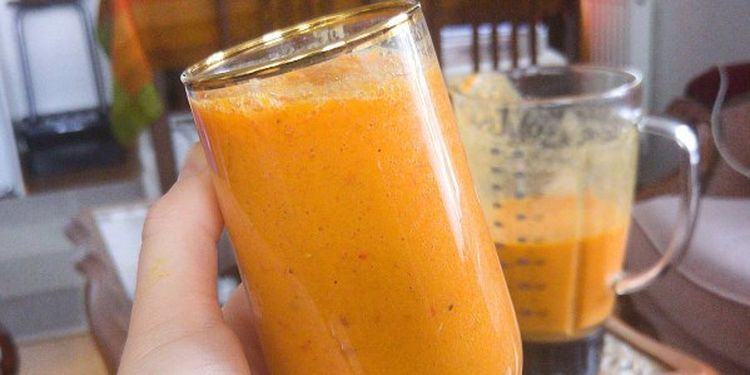
Turmeric
While this may be an unfamiliar spice to some, turmeric boasts impressive health benefits (and a tangy taste). Curcumin, the active ingredient in turmeric, is a natural anti-inflammatory proven to combat cancer, blood clots, diabetes, high cholesterol, and digestive disorders better than leading pharmaceutical drugs. It also keeps you awake and alert during the day. Not sure how to use it? Dry rub it on chicken and fish. Make a curry soup with vegetables and lentils. Try a relaxing turmeric tea with raw honey and coconut milk.
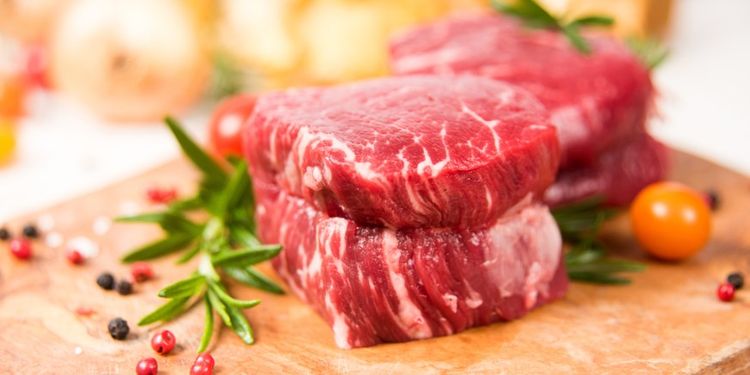
Grass-Fed Beef
Just like you shouldn’t put canola oil in your car, you shouldn’t feed cows corn. Grass-fed beef is leaner and carries more omega-3 fatty acids. It also contains conjugated linoleic acid, which protects against heart disease, diabetes, and cancer. Compared to grain-fed animals, grass-fed beef contains many more antioxidants, vitamins, and minerals. Grain-fed beef needs antibiotics and nitrate preservatives to create a “fresh” appearance because the cows aren’t nourished properly. These additives can wreck your body, so if you’re considering firing up the grill, spend a bit more for quality grass-fed beef. You’ll taste the difference.

Ostrich
Ostrich isn’t a typo, it’s a healthy source of protein. It contains less fat than chicken or turkey, and one serving has double the daily dose of vitamin B12, which aids in nervous system function. Ostrich also contains choline, like bananas, which is considered the essential nutrient for fat loss. The rising demand for this red meat is increasing the supply in grocery stores. If you come across it, try grilling it until medium and serving it on a bed of roasted veggies.

Eggs
Scrambled eggs are the first meal most of us learn to cook. Just because it’s quick and easy doesn’t diminish its health benefits. Free-range eggs are stuffed with amino acids, antioxidants, healthy fats, and choline. Be sure to include the yolk, as it’s packed with essential nutrients. Look for free-range, organic eggs to avoid the antibiotic-laden alternative. Worrying about cholesterol? Recent studies show no negative effects from eating eggs for healthy adults. In fact, they helped raise good cholesterol levels.
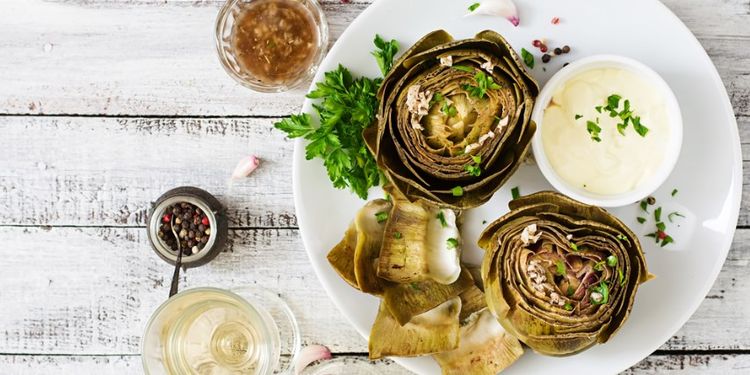
Artichoke
Expand the pizza toppings and cheesy spinach dip mindset. Artichokes are high in fiber and protein— one medium artichoke contains a whopping 4.2 grams of protein. If you need more fiber in your diet, try adding boiled artichoke to a salad with crunchy pecans, goat cheese, and sun-dried tomatoes. More recipes include pureeing artichoke into chickpea hummus; just mix chickpea, cooked artichokes, garlic, and olive oil for a healthy, filling dipping snack.

Olive Oil
Olive oil has its fair share of controversies, but extra virgin contains antioxidants that fend off cancers, osteoporosis, and brain degeneration. Heart healthy mono-saturated fats support your heart. EVOO has a lower smoke point, which means it’s perfect for sauteing vegetables but not ideal for frying. Drizzle it over salad to add a splash of healthy fats and texture to your lunch. Olive oil with a potent, almost spicy flavor means it’s nutrient-dense and truly extra virgin.

Peas
Love them or hate them, peas pack a plant-based protein punch. One cup of peas has eight times the protein of a cup of spinach. High levels of vitamin C make peas great for your immune system too! Add more peas to your diet for protein, especially if you’re a vegetarian. In fact, many plant-based protein shakes contain pea protein derivatives. Don’t know where they go? Try mixing peas with a chef salad or cooking them together in a vegetable mix. Steam them for a hearty side dish with extra protein.

Peppers
You don’t need red hot chili peppers to boost metabolism. Mild and spicy peppers contain dihydrocapsiate, a metabolic booster. Their antioxidants and vitamin C can reduce stress hormones that contribute to storing fat around the midsection. On top of that, the carotene in peppers supports eye health and skin clarity and fights free radicals. If spicy isn’t your thing, try stuffed sweet peppers. Scoop out the seeds, then stuff with beans, vegetables, and grass-fed beef for a satisfying meal.
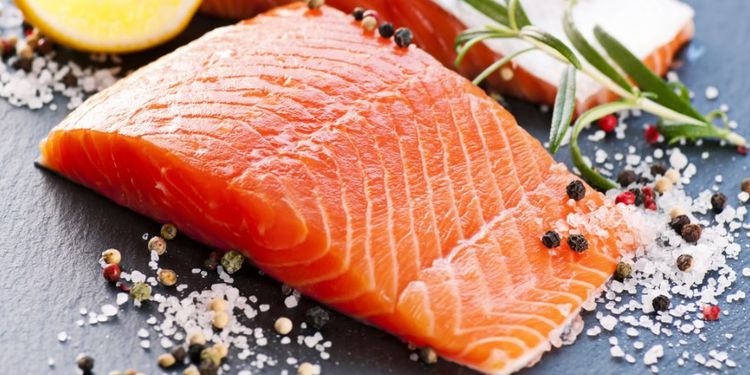
Wild Salmon
Grizzly bears love salmon, and you should too. Wild-caught salmon is a great protein option for those trying to lose weight. Wild-caught is leaner and provides more nutrients than farm-raised— the omega-3s and antioxidants in wild-caught fish help reduce inflammation. But beware— fish farms use antibiotics, steroids, and dyes to create a fresh-looking fish. It’s best to avoid those! Salmon cooks in 15 minutes or less, so just season with salt, pepper, and olive oil, then pop in the oven for a quick meal. Salmon pairs well with various vegetables, so experiment away!

Cocoa
This is not a drill. Cocoa is on the list! Cocoa contains flavonols, which include antioxidant and anti-inflammatory characteristics. Cocoa is rather bitter, so chocolate designers process the bitter flavor, destroying the natural antioxidants at the same time. Once the nutrients are processed out, the cocoa is packed with sugar, dairy, and dyes that only satisfy your sweet tooth. Buy minimally processed dark chocolate (look for a cocoa content of 70% or more). 90% content may be more bitter than you’re accustomed to, so start slowly.
